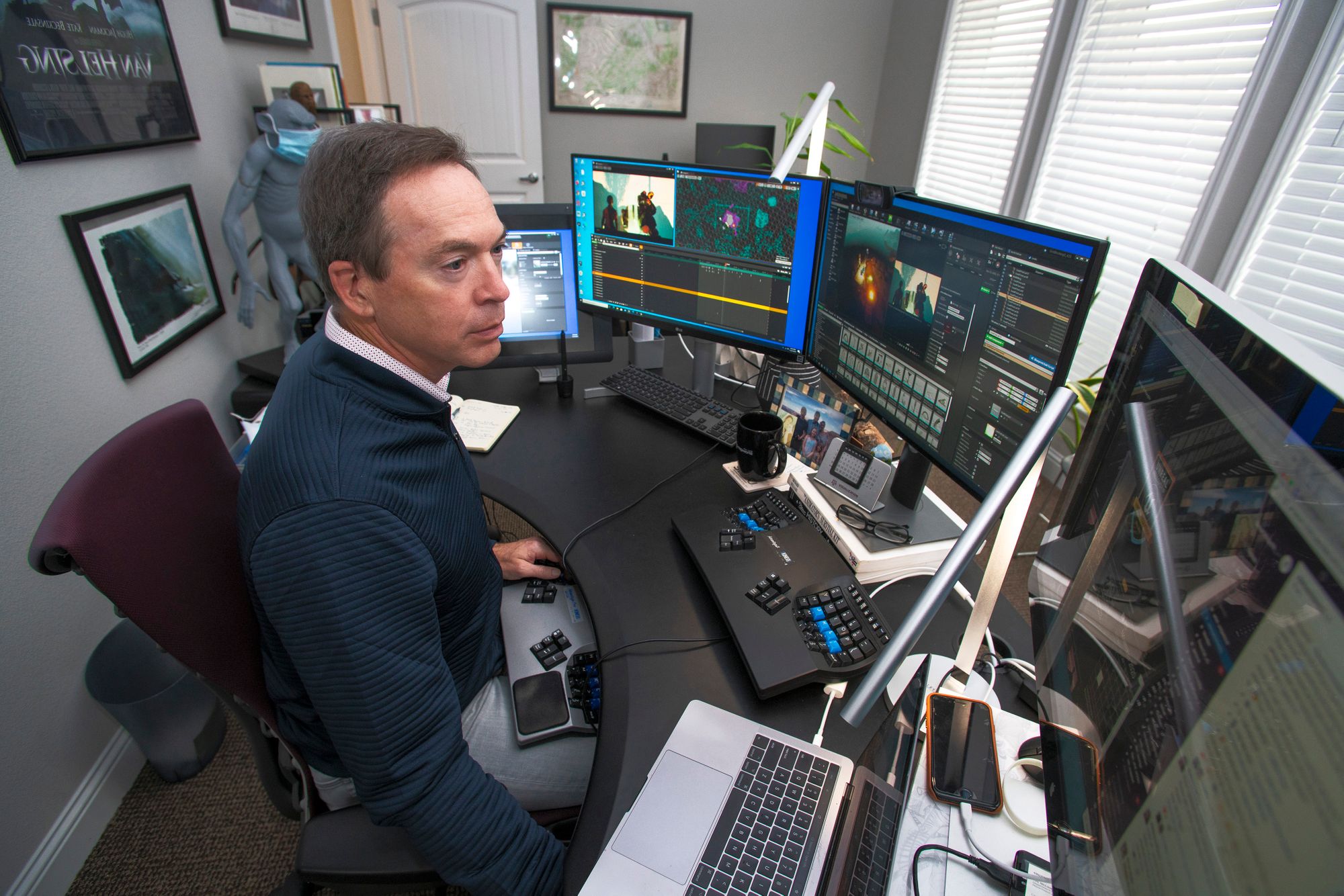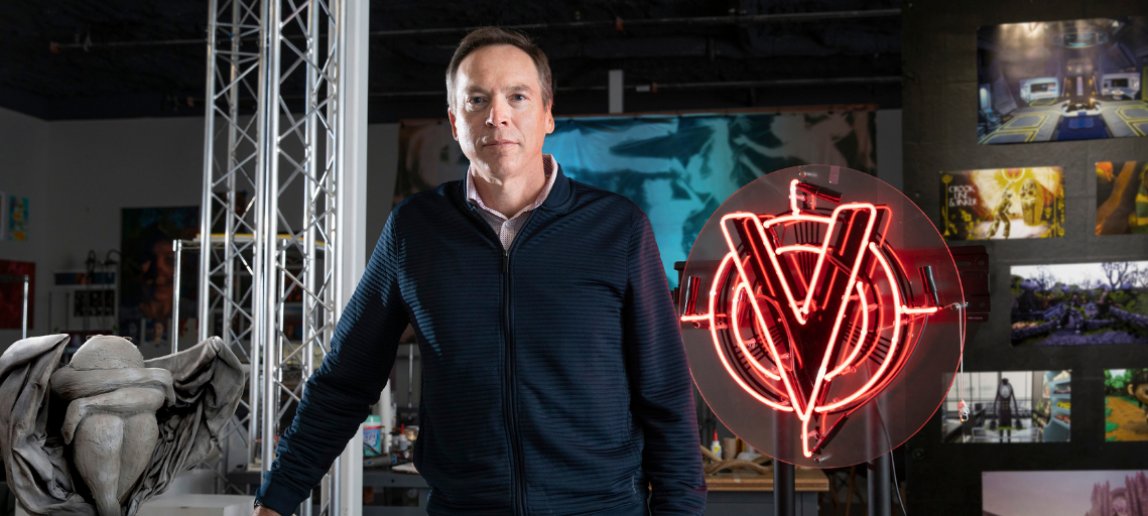Former Visualization department head hits the ground running with VFX fellowship
The constantly evolving world of digital animation and visual effects is seeing the adoption of new, streamlined workflows featuring next-generation tools and technologies — and the Texas A&M Department of Visualization will be ready to help its students incorporate these new procedures and software into their projects.
“The development of new virtual production techniques enabled by Unreal Engine, a real-time 3D creation platform developed by Epic Games for photoreal visuals and immersive experiences, is rapidly changing the way visual effects projects are approached,” said Tim McLaughlin, Associate Professor of Visualization and former Department Head.
These processes, he added, are spreading rapidly into other areas such as architecture, urban planning, product design and construction.
“The College of Architecture, with its unique collection of disciplines, is ideally suited to lead the way nationally in terms of education and research in this area,” he said.
McLaughlin is learning about the new workflows and next-generation tools as a member of the Epic Games Unreal Fellowship, an intensive, highly selective five week program designed to teach participants the latest skills and techniques related to virtual production and how to pass this knowledge on, in this case, to students and colleagues.
“I can extend the use of this technology into research areas in collaboration with colleagues across the campus, and will develop an outline for the integration of real-time technology into the curricula in the College of Architecture to enable access for our students to the job growth that is happening within this field,” he said.
“The big-picture goal is to invigorate interdisciplinary projects and technology within course design that will continue to distinguish Texas A&M University’s leadership in visualization education, innovation, and research.”
Industry background
Prior to his tenure as the visualization department’s founding head, McLaughlin worked in the visual effects and animation industries from 1994 to 2007 at Industrial Light & Magic, a division of Lucasfilm Ltd. in California, contributing to the industry’s transition from live action stage work and into visual effect production on individual computers.
This transition fragmented the production process, creating specializations within and distinct separations between filming and the implementation of animation and visual effects.
“Many of the people I worked with during that time made the transition from the live action stage and missed the collaborative environment of having all the key creative and technical decision makers looking at the same issues at the same time,” said McLaughlin.
A new virtual production age
In the world of visual effects, virtual production is a new and innovative solution to this problem, working to combine the physical and the digital into one, real-time process. In recent years, shows like Disney’s “The Mandalorian” and HBO’s “Westworld” have implemented virtual production to unify the various steps of production once more and bring creatives back into the same room – a process that is largely made possible through the use of Unreal Engine.
“Epic is leading the way, through the development of virtual production techniques enabled by Unreal Engine, to bring digital visual effects and stage work together in one space, both physical and virtual,” said McLaughlin.
Unreal Engine offers the innovative capability of live integration of motion captured movement and rendering pixels, including the use of ray-tracing, in real time. This combination enables photo-realistic on-set production of virtual environments and characters along and live actor performances and cinematography. The technology ingests and interprets the motion of the actors as they perform, essentially allowing for concurrent visualization of the computer generated and live stage characters, environments, lighting, and camera movements for filmmakers and visual effects professionals.
“It’s just incredible to see the fidelity of imagery on the screen and move around it and manipulate it in real time,” said McLaughlin. “Unreal Engine and related tools significantly expand and deepen what’s possible. It’s exciting imagining ways to adopt these tools and processes into other design-oriented fields where teams of people need to work together on a complex problem in real-time.”
Though participation in the fellowship is remote, it offers real-time, hands-on training, personal mentorship, demonstrations and discussion on the state of the art, and immersion in the fundamentals of Unreal Engine, subsidized by a $10,000 stipend.

McLaughlin said his ability to participate in this fellowship would not have been possible without support from Mei-Kuen (Meg) Tsui and Ken Glass at Dell.
“To participate in the fellowship, I needed more computing power than I had. Dell made a significant contribution to equip our Visualization Immersive Reality Lab several years ago, so I reached out to Mei-Kuen (Meg) Tsui at Dell, and they generously gave a 5820 Dell computer to the Department of Visualization for my initial use,” McLaughlin said. “Without this computer, I wouldn’t be able to participate in this rich learning opportunity, and I am very grateful to Dell for that.”
For more information, contact rnira@arch.tamu.edu or doswald@tamu.edu.


